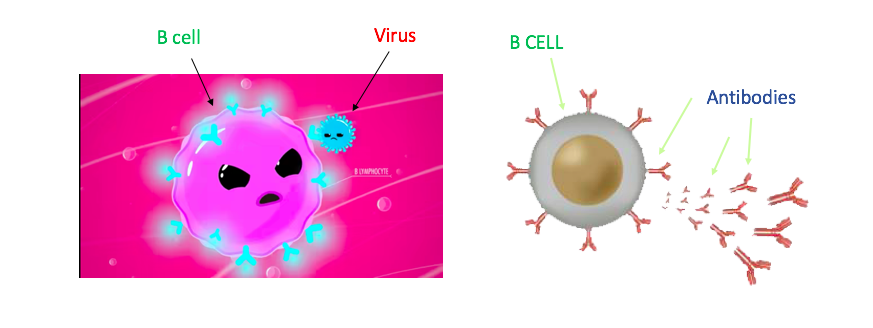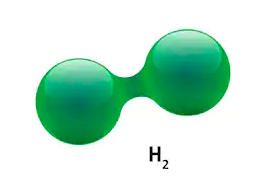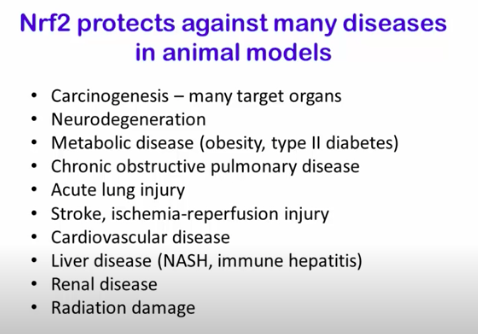YOUR IMMUNE SYSTEM + HYDROGEN GAS
This page makes the case on how hydrogen can increase functionality on a cellular level
The following is a very basic explanation of what cells do. The moderators of this website acknowledge that there is more to the following explanation, and have carefully omitted certain bio-chemistry facts to retain a basic understanding for those who do not have an in-depth knowledge of biology and chemistry.
Cells
Our body is made up of trillions of cells, with around 200 different cell types. Each cell has a special role to keep our body working properly. Cells are responsible for keeping our immune system functioning and fighting off pathogens1 from invading your tissues.
Two cell example
Let’s take a closer look at two of the 200 cells in our body: B cells and T cells.
B cells
B cells are a type of white blood cell that recognizes foreign pathogens. They:
- Neutralize the virus
- Produce antibodies2

There are several types of B cells, and they have two main jobs. They neutralize foreign invaders so our tissues are protected from the viruses (above left picture) and produce antibodies (above right picture) so that the antibodies can
1. also neutralize the foreign pathogens on behalf of the B cell, and
2. protect our body once more should our body encounters the same pathogen again
To learn more about B cells, click here.
T cells
T cells are our warrior cells. They are a type of white blood cell that fight off bacteria and viruses that are constantly invading our body, as well as cancer cells. There are also several types of T cells, but the two main ones are the:
1. Helper T cells
2. Cytotoxic T cells3
Helper T cells assist B Cells to produce antibodies (without the Helper T’s, B cells cannot produce antibodies). Cytotoxic T cells kill the other cells in our body that have been infected by viruses or cancer.
The video below shows a cytotoxic T cell killing a cell infected with the influenza virus. When you hear the “pop” sound, that means the infected cell has been eliminated. (The smaller cell is the T cell, and the bigger cell is the infected cell.)
The following video shows another cytotoxic T cell attacking two cancer cells, one at a time. The green colour is the T cell. When the cancer cell turns blue, it is an indication that the infected cancer cell has been destroyed.
(Copyright: University of San Francisco)
To learn more about T cells, click here.
T cells & Covid-19
At least five studies have just come out stating that the stronger our T cells are, the better they are able to fend off Covid-19 or any other previous kinds of coronaviruses. Click on the dates to bring you to the studies found:
April 2020
May 2020
June 2020
July 2020
August 2020
Can hydrogen gas aid in T cell strength? Various studies have indicated so.
The Mitochondria
One of the most important parts in our cell (i.e. T cell or B cell) is the mitochondria.

Imagine you have a car, and you need that car to go from Point A to Point B. Without an engine, your car cannot do the job and it’s deemed useless. Similarly, the mitochondria are the engine of a cell. If the mitochondria malfunction, our cell cannot do its job properly. When the mitochondria are damaged, it can lead a person to all types of diseases including but not limited to diabetes, cancer, Alzheimer’s, heart disease, and aging.
The mitochondria produce a very dangerous free radical called the hydroxyl radical.

Left unchecked, the hydroxyl radical is responsible for the potential development of many health issues including cancer and diabetes4, just to name a couple.
HYDROGEN GAS NEUTRALIZES THE HYDROXYL RADICAL
Unfortunately, our body is not able to produce any antioxidants that can neutralize the hydroxyl radical5. The good news is that we have found an antioxidant that can do it for us, and that is hydrogen gas.

Hydrogen is the smallest molecule in the universe. It is so small that it can not only penetrate into the cellular membrane, it can even access the mitochondria where it can then neutralize the hydroxyl radical.
The great news is that when hydrogen gas interacts with the hydroxyl radical and neutralizes it, the byproduct is water, which makes hydrogen gas very safe compared to other kinds of antioxidants.
NRF2 Pathway
The Nrf2 pathway is a modulating system in the body.
In order to combat inflammation, the body produces its own antioxidants. The Nrf2 pathway helps to regulate the body’s antioxidants so that the antioxidants will be effective in fighting inflammation.
 Source: Youtube
Source: Youtube
How does hydrogen gas help with our Nrf2 pathway?
Hydrogen gas helps to regulate the Nrf2 pathway. It does so by better supporting the body’s antioxidants and/or increasing the production of the body’s antioxidants6 to fight inflammation better.
CONCLUSION
In summary, hydrogen gas helps the body immunity in these ways7 :
- Strengthens T cells
- Gets rid of the most toxic free radicals in the body i.e. the hydroxyl radical
- Regulates the Nrf2 pathway to support and/or increase the body’s production of antioxidants
Click here for therapeutic benefits of hydrogen gas based on numerous studies (T cell productivity included)
Learn more about free radicals and antioxidants here
Click here for our various products that can produce therapeutic levels of hydrogen gas
Footnotes
- Bacteria and viruses
- Antibodies are proteins that neutralize viruses. They are first formed when your body encounters a pathogen for the first time. Antibodies aid the body for a faster recovery when the body encounters the same pathogen for a second time
- The other kinds of T cells besides Helper and Cytotoxic T cells are regulatory, memory, natural killer and suppressor, but Helper and Cytotoxic T cells usually garner the most attention as they are responsible for defending the body from pathogens and cancer
- Source: Science Direct
- Our bodies produce antioxidants like SOD (superoxide dismutase), glutathione and catalase to combat superoxide free radicals, peroxide free radicals and hydrogen peroxide free radicals respectively. This page breaks it down in better detail.
- Particularly SOD, GPx and CAT
- There are more but they are currently still being studied.
